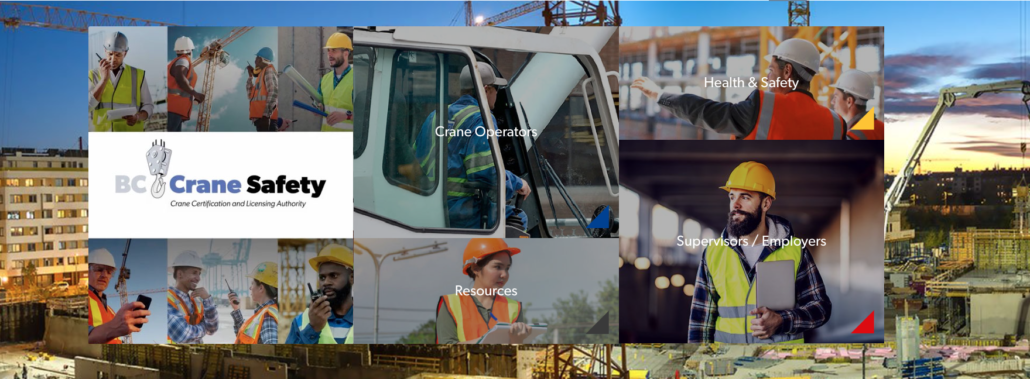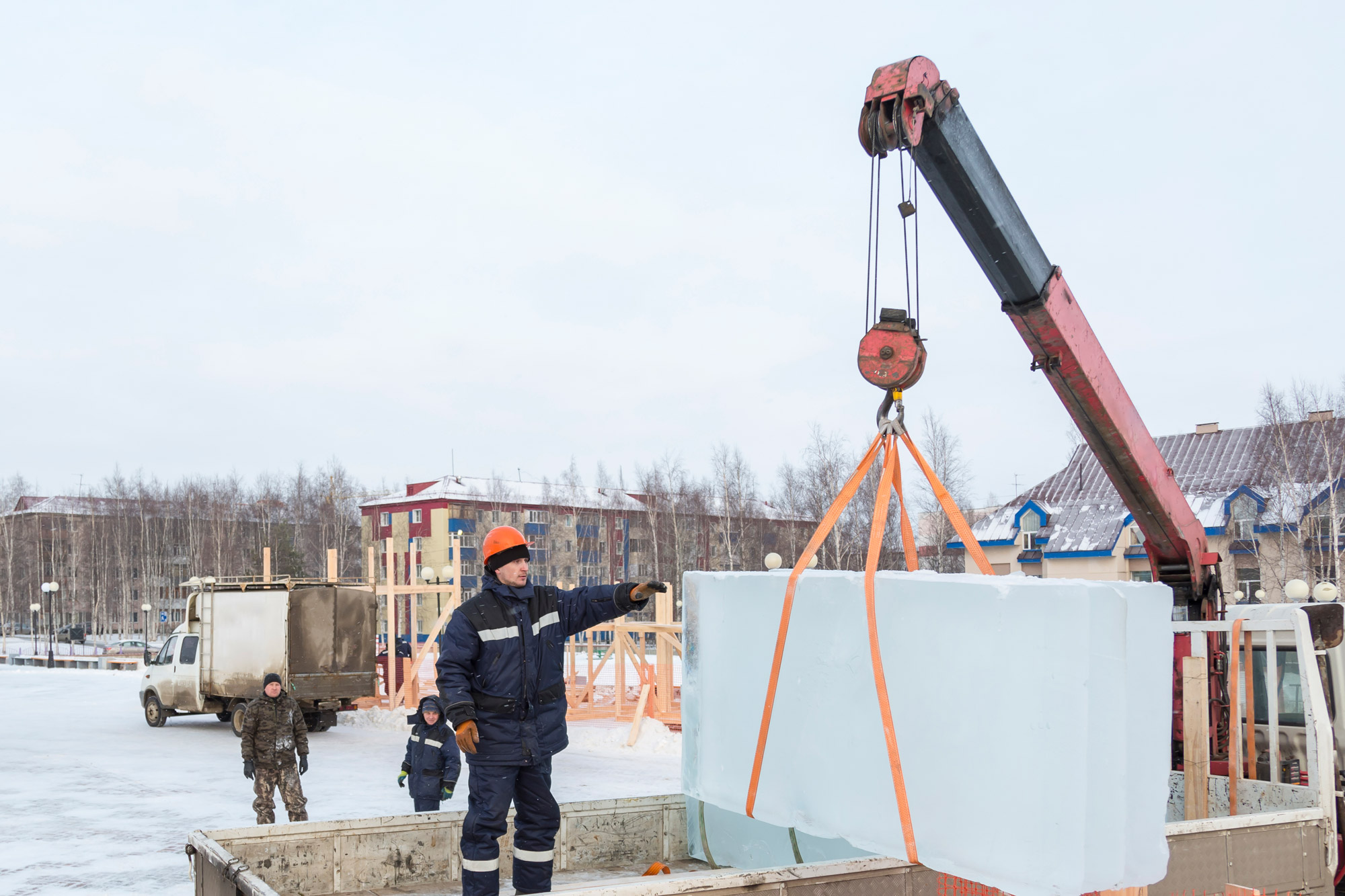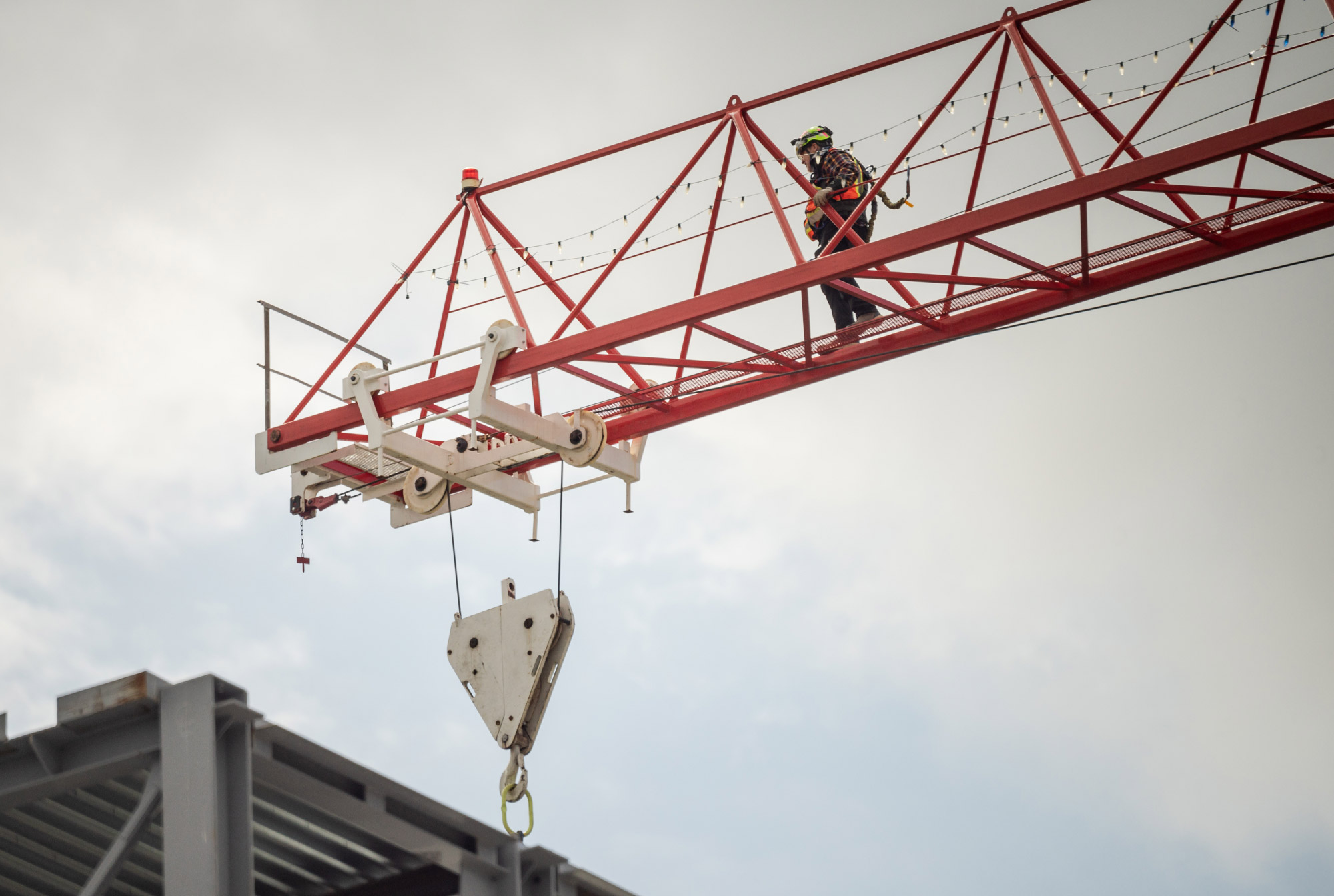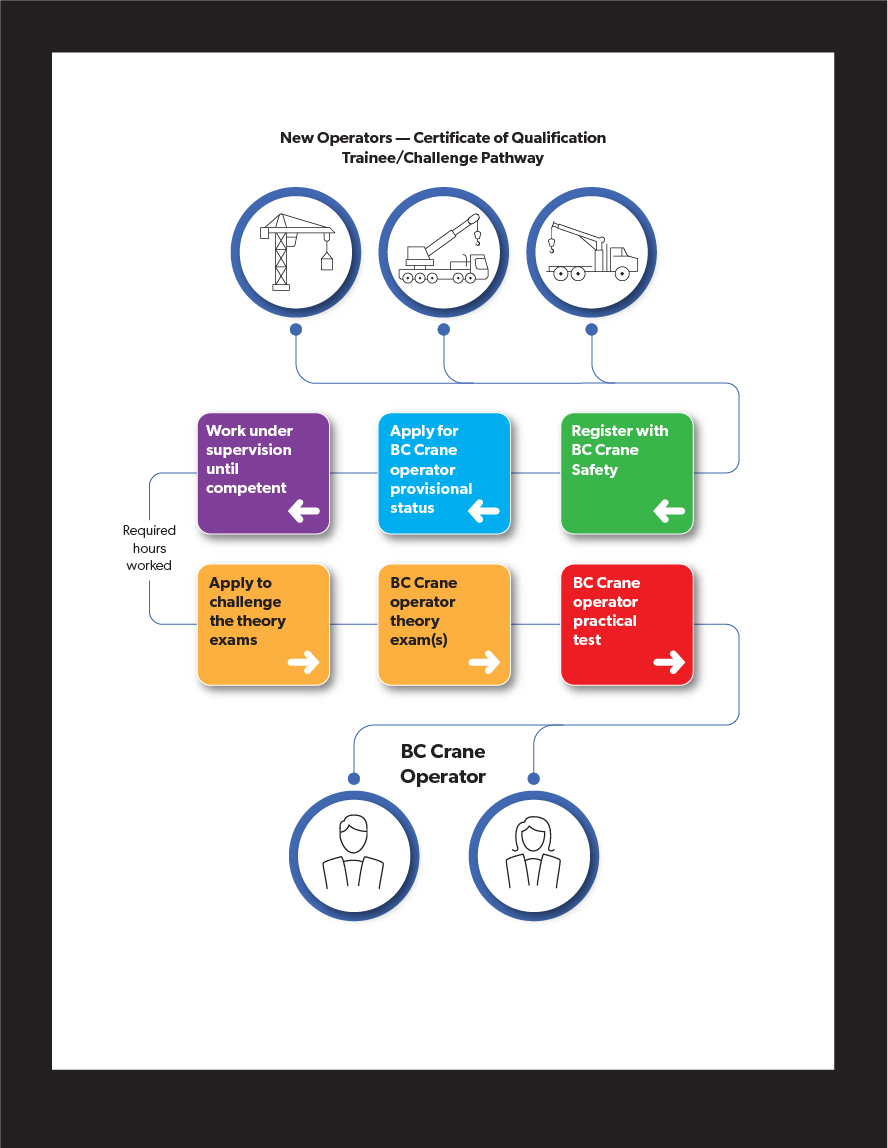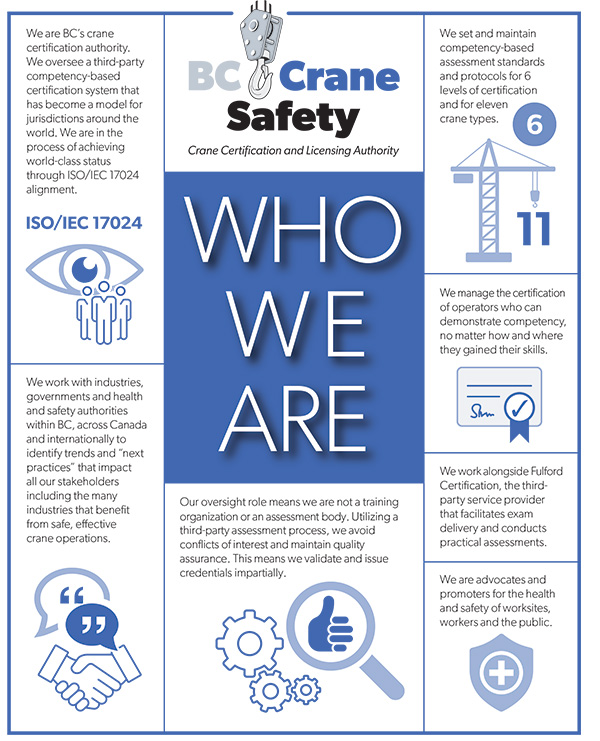December 5, 2023
BC CRANE SAFETY WINTER 2023
Help Prevent Musculoskeletal Injuries (MSIs) in Cold Conditions
Exposure to cold can increase the risk of Musculoskeletal Injuries (MSIs). Cold conditions can cause muscles and joints to become stiff, reducing flexibility and making workers more susceptible to strains and sprains. Constricted blood vessels due to cold temperatures reduce the blood flow to muscles and extremities and cause numbness in the fingers. This impaired muscle function can increase the risk of injuries because crane operators rely on a strong and precise grip to control equipment.
Learn more about MSIs, how they can affect people who work with cranes, and how applying the principles of ergonomics can help prevent them – especially in cold weather.
Seasonal Update: Holiday Lights
During the winter, holiday light displays on tower cranes sparkle with seasonal cheer across many of our night-time skylines. Installing lights has become a beloved tradition that many companies continue every year. But these twinkling displays can pose serious hazards to workers. Ensure your holiday lights are planned carefully and installed safely so everyone can enjoy the holiday season. WorkSafeBC and BC Crane Safety have developed a new bulletin to help you recognize the hazards and plan and install holiday lights safely.
Employer Awareness: Conditions of Provisional Certification
Crane operators starting their careers in BC begin by achieving a Provisional Certificate that allows them to begin operating cranes on a worksite. Employers are ultimately responsible for ensuring that Provisional operators receive appropriate oversight by qualified and competent supervisors during their entire training period.
The flowchart above shows a crane operator’s path from choosing the equipment they want to operate, getting their Provisional Certificate, and gaining work experience until they are ready to be assessed for their Full Scope Certification.
As employers and supervisors, you help to support and maintain the high standard status of BC Crane Safety certified crane operators by ensuring new operators safely and successfully navigate the path to Full Scope Certification. Learn about the requirements that come along with that important responsibility.
Q & A
Q: Are flexible intermediate bulk containers (FIBCs) the right tools for the job in construction?
A: Flexible intermediate bulk containers (FIBCs) are large, industrial fabric bags developed to store and transport bulk materials, such as powders and small particles.
However, FIBCs are not the right tools to move rebar, construction debris, hardened shotcrete and other sharp or pointed items. Those items can easily damage the FIBCs and affect the integrity of the bag. If the bag fails, the result can be fatal.
Learn more about the safe use and limitations of FIBCs by reading the WorkSafeBC Bulletin.
Q: What options do I have to get experience and get certified as a crane operator?
A: In BC, crane operators must have a certificate acceptable to WorkSafeBC to operate cranes in any of the three general crane categories (boom trucks, mobiles, and tower cranes). The operator must be either certified or registered for assessment through BC Crane Safety, ultimately leading to Full Scope Certification.
There are three paths to BC crane certification and six different crane operator designations to meet different applications and needs. The paths are:
- New operators – trainees and registered apprentices.
- Recognition process for crane operators already certified in another jurisdiction.
- Challenge process for experienced crane operators who are not yet certified.
If you are new to the crane industry, you can learn the trade as a trainee while working under the mentorship of skilled operators. For the larger crane classifications, you can do this as a registered apprentice or trainee through SkilledTradesBC.
Visit bccranesafety.ca to learn more about the options and the paths to BC crane operator certification.
Q: Do you know if there are changes to radio frequencies for the tower crane industry?
A: Yes, changes are coming. As of January 1, 2024, radios coordinated by WorkSafeBC must comply with updated federal requirements to operate on an 11k bandwidth (except for NXDN radios), with a transmitted power of 1 Watt or less, and to be certified by the ISED Canada Certification and Engineering Bureau..
Radio requirements for 2024:
- All radios must now meet Innovation, Science and Economic Development (ISED) Canada’s requirements. Radios must be rated/ certified to operate at the specific (wattage) output and set at the 11K narrow bandwidth.
- For the radio frequency coordination request, one form specifying the number of crane frequencies is sufficient.
- For cranes, the requirement is that the cab has a MAX output of 1.00 Watt. Portable radios (riggers) should also have a MAX output of 1.00 Watt.
- WorkSafeBC does not coordinate mobile crane frequencies. Dedicated frequencies for these are handled/assigned by ISED. Contact them at:Lower Mainland District Office
17th Floor
13401 108th Avenue
Surrey, B.C. V3T 5V6
Telephone: (604) 666-5468 or 1-800-667-3780
Facsimile: (604) 666-5473
E-mail: vancouver.district@ic.gc.ca
Crane radio frequency application:
WorkSafeBC has now established a new online form.
All radio shops/ service providers should use this form when requesting a NEW tower crane coordination.
Crane-to-crane communication:
WorkSafeBC does not assign or coordinate crane-to-crane frequencies. For this purpose, WorkSafeBC suggests the use of cell phones or acquiring a dedicated communication frequency from ISED (Industry Canada).
OHS Regulation:
The parts of the Regulation that pertain to two-way radio coordination are:
As well as the associated Guideline G14.48(2).
Learn about best practices for using two-way radios during crane operations by checking out the BC Crane Safety Toolbox Talk – Best practices for using two-way radios. [link when posted on BC Crane Safety website].

